CADEX’s Handlebar Gambit
In “my day” there was one kind of bike racing you did, if you weren’t on a velodrome – road racing. No MTB, no triathlon, no BMX, only road. There were two handlebar brands that you’d put on your road bike: Cinelli or 3T. Obviously a lot has changed since then but one thing remains a constant: 3T, under different ownership than in “my day," remains a leader in handlebar design. But what it leads in is, in my opinion, shape. Some companies lead in shape, and 3T is one (with the Superghaia and Aeroghaia), and then there are upstart companies like Coefficient as well.
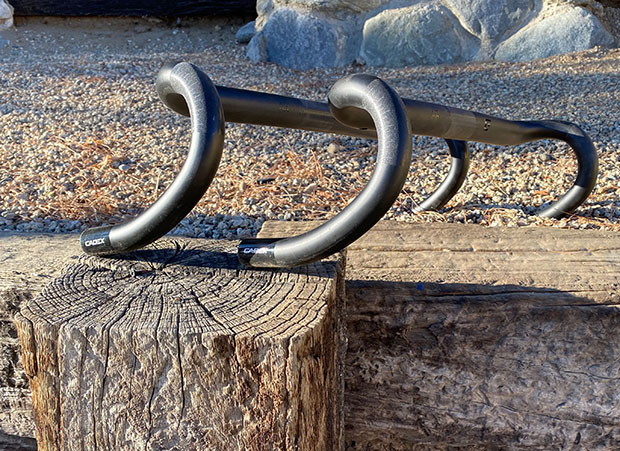
CADEX is taking a different route to handlebar design. Yes, it’s got shape in mind, and we’ll get to that. But it’s really the more traditional metrics of weight and stiffness that animate the designs of these bars. And by the way, the new AR (announced today) and the CADEX Race are both road bars. Mind, I have a pair of these new AR bars (image above) and they’re both going on some new gravel bikes I’m building up, and that’s because of their shape. If you read what I wrote about “drop” handlebars you’ll know that I don’t really see a difference between road bars and gravel bars. I’ve got a gravel bar on my QR SRsix road bike, and with this CADEX AR I have a new fave road bar for my gravel bike.
But it’s the construction of the bar that is novel and while I’m not a weightweenie per se, its mode of construction makes a stronger, lighter bar possible. The bar is molded in one piece and you probably didn’t know that most carbon handlebars aren’t. When Kestrel made the first monocoque carbon road bike (in 1986, was it?) the game changer was not geometry, but mode of construction. Same kinda thing here.
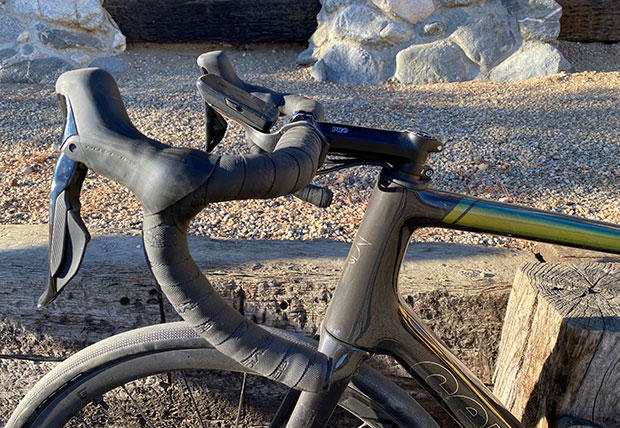
The new AR weighs 190 grams, and that’s between 20 and 50 grams lighter than the other carbon bars on my bikes. So, yeah, light. But that’s nothing compared to my CADEX Race, which is on another road bike I just built up. It weighs in at 160 grams. The Race is on the bike pictured above. It also is a one-piece molded bar (rather than the hooks made separately and molded to the tops, which is more typical). This is what makes these CADEX handlebars so light.
The AR is probably more my favorite of the two because of the shape. There are four metrics that I look for in a drop bar, and when I find them I use them on both my road and my gravel bikes. The first two are “drop and “reach” and I apologize for all these “reach” measurements that have popped up; it’s all my fault I probably should’ve just stuck with “rise” and “run” when I started handing out x/y bike nomenclature 20 years ago. Nevertheless, this does describe the bar geometry and when Zipp first presented to us the “super short and shallow” geometry of its handlebars I became an instant fan. This AR is super short – at 70mm of bar reach – and even shallower at 115mm. This is the gold standard in drop bar geometries, in my book.
How does the bar get that short? It begins with a 3° backsweep after it leaves the stem clamp. This gives the bar some room for its turns. Yes, you could get this same geometry by using a standard geometry bar and a 10mm shorter stem, but this way I get a longer distance from the saddle to the tops, and I can ride on the tops feeling less cramped.
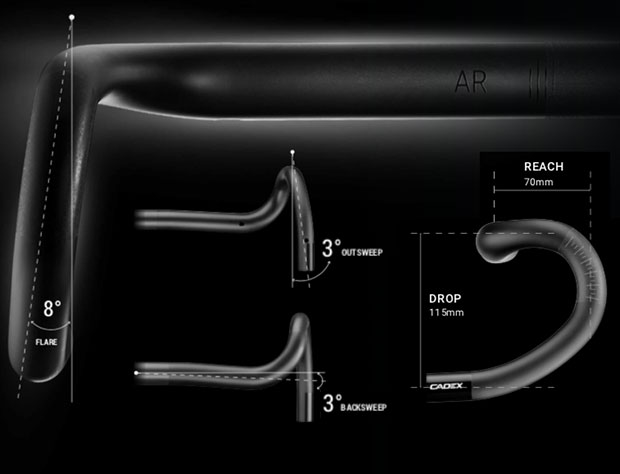
The 115mm drop, I honestly don’t know how they get it that shallow. I’m just glad they do. Maybe it’s a by-product of not having that joint in there. Some handlebars give you that 115mm drop by raising the bars after they leave the stem, but this kind of changes the geometry of the bike. With a bar like this I'd need a lower frame stack, or flatter stem pitch, to get the tops down where I need them, and then I’m back to a more standard bar drop. That doesn’t work.
The third metric important to me is flare and in “my day” flare happened on handlebars on funky touring bikes ridden by folks wearing Skid Lid helmets. No. Thank. You. But gravel brought the flared bar back and this bar has 8° of flare. Flare is one reason a 115mm drop works: the flare gets the wrists out of the way of the tops when you’re on the drops. I’m all about flare these days, road or gravel.
Finally, I don’t want those bars to point out at an angle at their terminus; I want them pretty close to heading straight back for the last 40mm or so of length. These bars have a 3° bend that makes that happen, and that geometry pretty much sums up bars like those made by the 3T to which I allude above.
What these bars don’t have are holes large enough for internal hydraulic housing. This disqualifies these bars for my use in my QR SRsix – the aero road bike made for completely hidden cables and housing. However, I have the CADEX Race on my Cervelo R5, because the R5 does not accommodate that kind of routing. This is another thing about these CADEX bars that make them more traditional, for lack of a better word. They obviously don’t anticipate an integrated bar/stem front end (which in my book is not the greatest idea). But I think CADEX must eventually make some road bars that anticipate housing that runs through the stem.
One reason you're seeing a lot of CADEX these days – if you're wondering – is that these are the products (wheels, handlebars, etc.) ridden by the on-fire Norwegians Gustav Iden and Kristian Blummenfelt, who between them are gobbling up the big titles this year (Olympic champion, IRONMAN 70.3 World Champion). Here's the CADEX handlebar lineup.


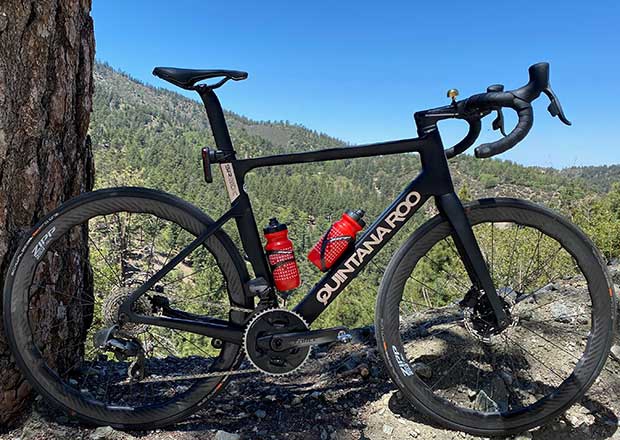
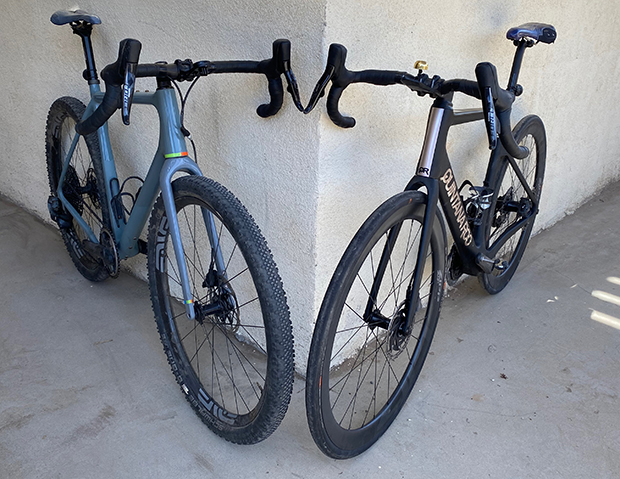
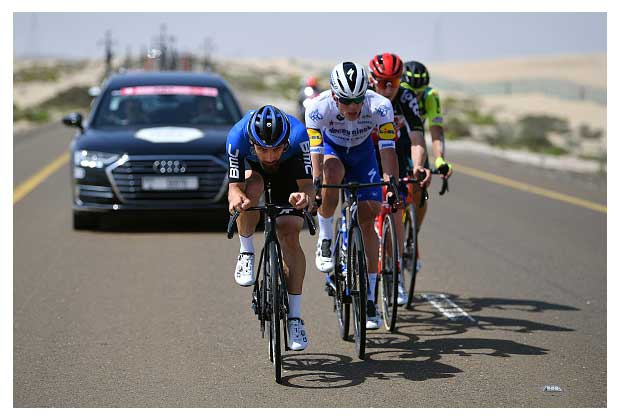
Start the discussion at slowtwitch.northend.network